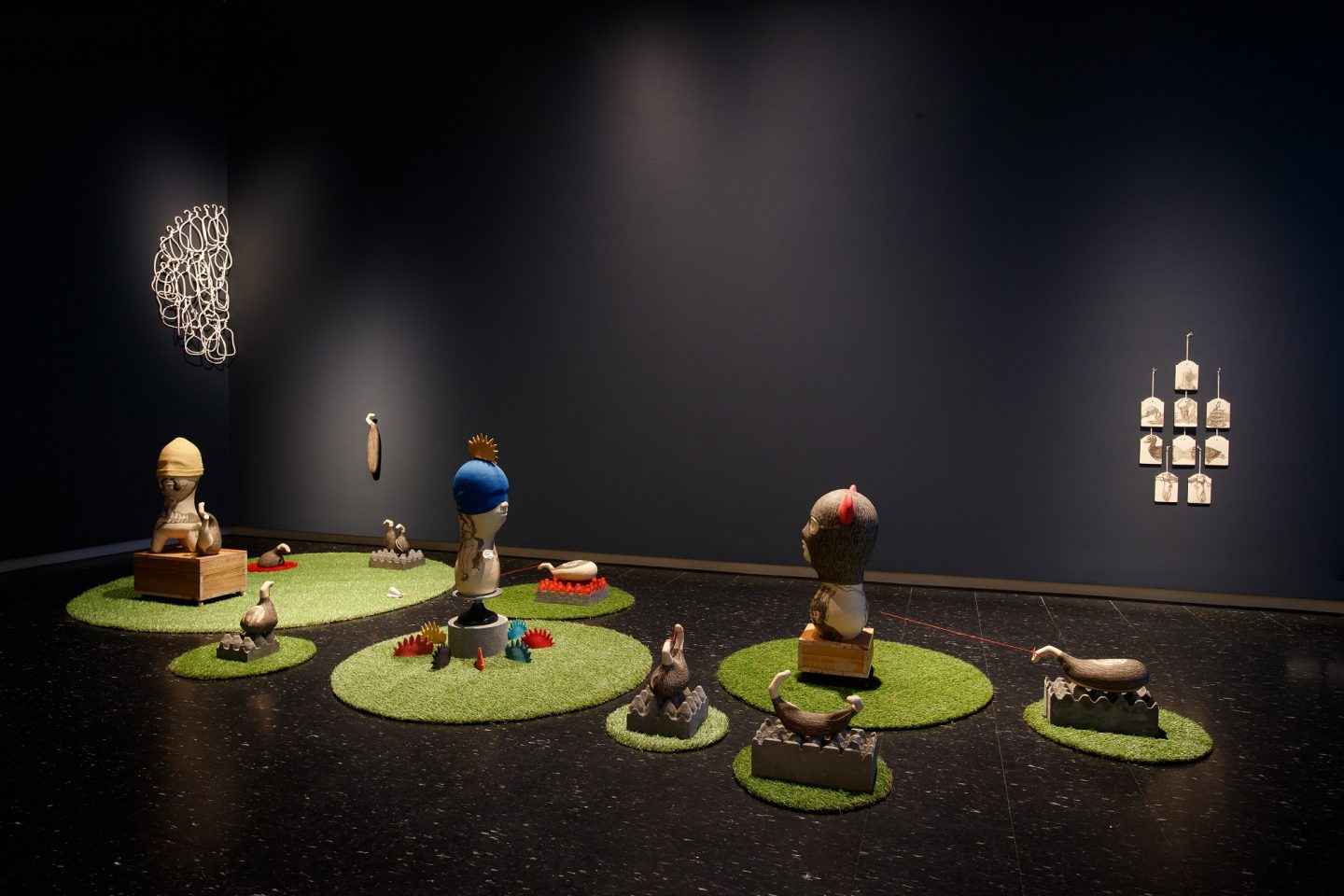Meet Your Maker:
Mark Valenzuela

Stepping into Mark Valenzuela’s Croydon Park studio, it is difficult to know where to rest your eyes.
Fleshy ceramic globules hang from industrial chains, balaclava-wearing rubber ducks flock together on tabletops,scribbly pen portraits assemble in the corner like a crowd; across every angle of Valenzuela’s studio lies an exhibition in the making. The Philippine-born artist is sensitive to space and context. Having moved from Mindanao to Adelaide in 2011, his multifarious installations – composed of ceramics, sculpture, drawing and painting – explore notions of territory and occupancy.
For Valenzuela, the constant reconfiguring of work, both inside and outside of the studio, assuages the more stultifying traditions of ceramics. His approach to the medium piqued the interest of fellow South Australian ceramicist Gus Clutterbuck, one of twelve recipients of Guildhouse’s Catapult 2020 mentorship. The program supports the development and careers of South Australian artists, designers and craftspeople through a process-led mentor–mentee relationship. With wry surprise Valenzuela describes being approached: “I didn’t think I was old enough to be a mentor.” His humour belies a deeper philosophical attitude. “A mentorship implies a certain hierarchy but I’m more interested in collaboration. In sharing my knowledge with Gus, I’m curious about the way he thinks. Collaboration is more reciprocal, it goes both ways.”
This strong sense of c ommunion underpins other forthcoming projects for Valenzuela, including the Life, Death and D ying residency led by artist Daniel Connell in conjunction with the Laurel Palliative Care Foundation. Although Valenzuela is engaged as an arti st, he doubts his role is soley to make art. “I’m not sure the parti cipants really want to hold clay or even talk about art. It is probably the least of their priorities. For me, community is not a ‘desired outcome’. It is meeting people wherever they find themselves and figuring it out together.”
Valenzuela is interested in supporting Adelaide’s artistic community, too. Returning to his studio, the structure itself functions as an artist’s proof. Constructed from 90 per cent salvaged building material, his studio demonstrates a model for artists to affordably and sustainably build their own spaces. He describes the process as bayaníhan, a Tagalog word meaning community spirit. Valenzuela’s “many hands make light work” approach could see backyards across Adelaide annexed by composite, artist-built structures – a fitting project for an artist engaged in the politics of space.
Content Sponsored by

